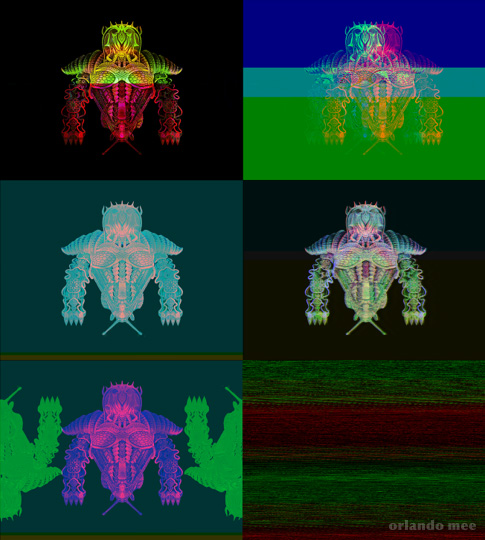This is the second in a series of posts detailing my research in the Master of Animation, Games and Interactivity (MAGI) at RMIT University and its subsequent development as a part of my arts practice. You may wish to begin from the first entry. If not, then read on!
My research in the second half of the MAGI program moved towards interactivity and UI/UX design. I had alluded to Ted Nelson’s concept of intertwingularity in an earlier video work, and I was interested in his ideas regarding hypertexts.
Because Nelson’s ideas contributed to the formation of the modern internet, he is commonly referred to as a ‘visionary’. I began researching other so-called internet visionaries— people like Vannevar Bush and Paul Otlet, who described systems for accessing and cross-referencing global databases of information many decades before such systems became a reality.
Considering the rather idyllic nature of these visions, I wondered if Otlet, Bush or Nelson would approve of the pervasively consumerist webspace we engage with today. As professor Ralph Ammer, of the Munich University of Applied Sciences points out, “The design of profitable digital products and services can limit your world view to an extremely narrow perspective.”*
I became interested in developing an alternative ethos to current web design practices— one not rooted in product sales and customer conversion, but in the needs of conscious human beings.
Taking some license with an alternative usage of the term ‘visionary’, I explored the visual art genre known as ‘visionary art’ as a way to design digital interfaces which speak to the soul or Self rather than to the consumer. I was inspired by the statement of preeminent visionary artist Alex Grey that, “Our exposure to technological innovations and diverse forms of sacred art gives artists at the dawn of the twenty-first century a unique opportunity to create more integrative and universal spiritual art than ever before”**.
Additionally, my exposure to the work of visionary artist Paul Laffoley (1935-2015) had happened to dovetail with my research into media art. I believed there were numerous untapped opportunities for cross-pollination between Laffoley’s work and the design of digital interfaces.
Paul Lafolley was primarily a painter working with traditional media. Even so, his paintings have been described as portals, operating systems and interfaces***. His complex, diagrammatic works weave webs of interrelation between seemingly disparate fields of knowledge— much like a deep dive into Wikipedia, or down the hyperlinked rabbit hole of the pre-corporatized internet.
I proposed that Laffoley’s aptitude for visual cross-referencing could be analysed and applied to interactivity design in general. I argued that he was a master of the information design skillset which Ted Nelson dubbed ‘fantics’ (derived from the Greek phantein, “to show” and phantas-tein, “to present to the eye or mind”).
Nelson describes fantics as, “…The art and science of getting ideas across, both emotionally and cognitively.”**** He writes, “The character of what gets across is always dual; both the explicit structures, and the feelings that go with them.”
As art scholar Linda Dalrymple Henderson has observed, Laffoley’s style of visual communication strikes a rather unique balance between the purely cognitive and the emotional or experiential***** (see Figure 1). He combines visual structure and emotive impact to great effect, just as Nelson describes.
Unfortunately, my own fantic skills were not quite up to the task of elaborating on such a far-ranging research proposal, and my final submission proved somewhat unfocused. Nevertheless, I continue to believe that this idea has potential.
*Ammer, R. 2016, Interaction Design is dead. What now? , visited 8 Oct 2018.
**Grey, A. n.d., What is Visionary Art?, Visited 8 Oct 2018.
***Walla, D 2016, ‘The Navigator’, in D Walla (ed.), The Essential Paul Laffoley, University of Chicago Press, London and Chicago, pp. 1-9.
****Nelson, T 1974, Computer Lib / Dream Machines, Nashville, Tenn. USA.
*****Henderson, L 2016, ‘Paul Laffoley and Dimensionality: Visionary Painting as a System of Knowledge’ in D Walla (ed.), The Essential Paul Laffoley, University of Chicago Press, London and Chicago, pp. 31-48.



